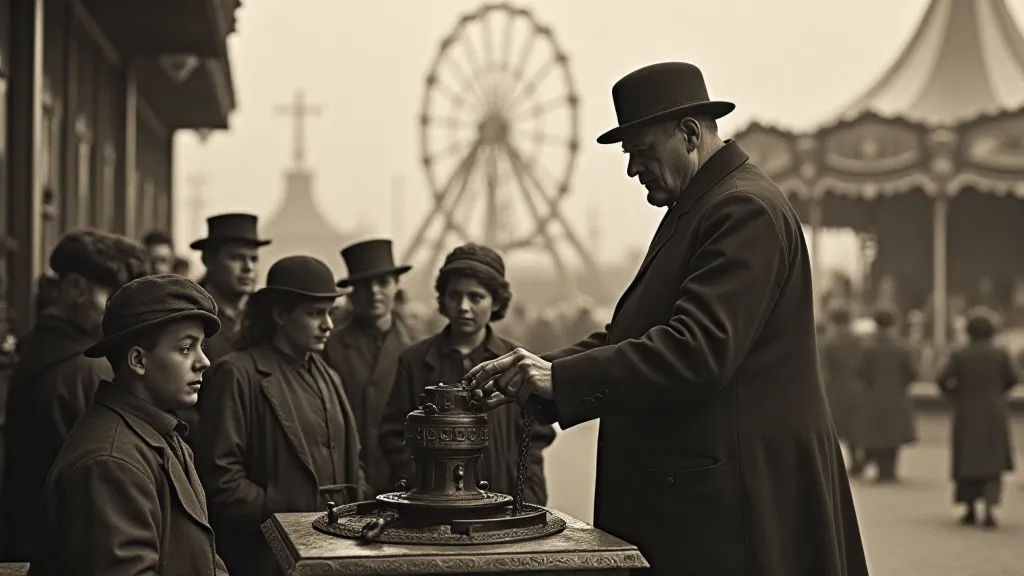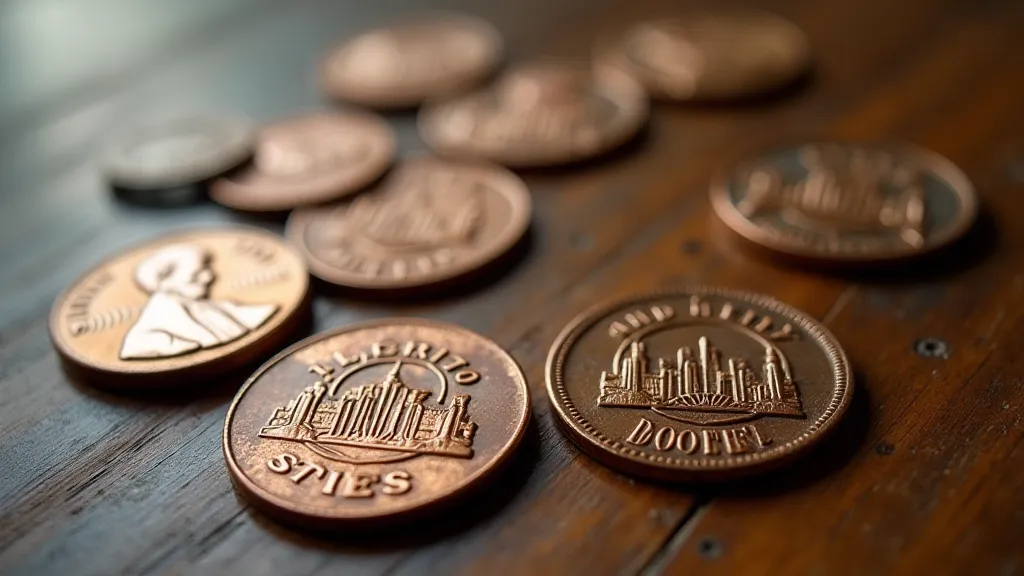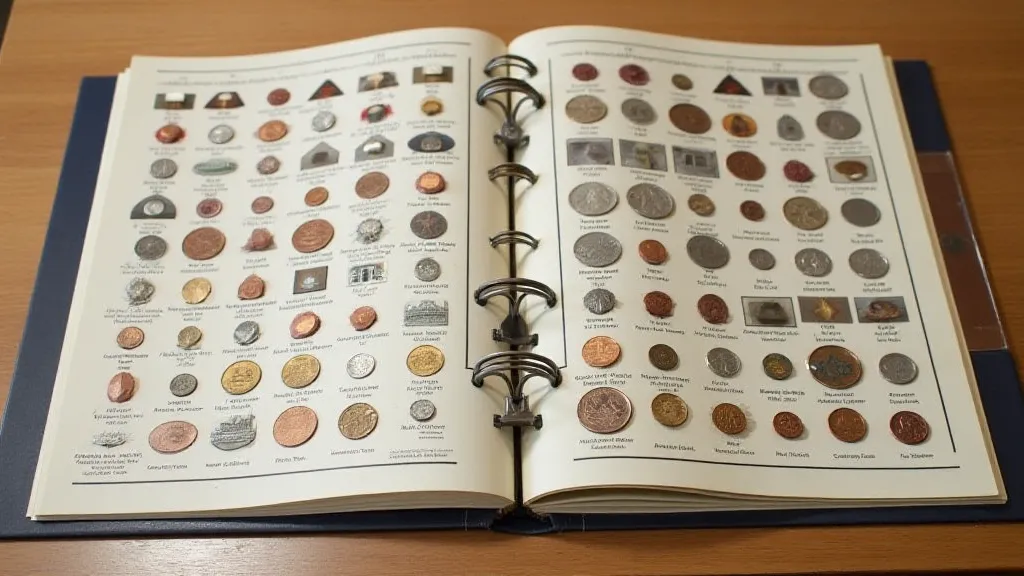Beyond the Souvenir: Pressed Pennies as Tangible Histories
There’s something profoundly comforting about holding a pressed penny. The familiar feel of the metal, the satisfying indentation marking a moment in time – it evokes a sense of simpler pleasures, of family vacations and roadside attractions. But pressed pennies are so much more than just souvenirs; they're tiny, tangible fragments of history, reflecting the evolution of American commerce, technology, and regional identity. Many dismiss them as fleeting mementos, easily lost or forgotten, but a deeper appreciation reveals a surprisingly rich and fascinating collecting world.
My own journey into pressed penny collecting began, unexpectedly, with an old accordion. My grandfather, a taciturn man of few words, kept a beautifully restored Hohner Marine Band accordion tucked away in his workshop. He rarely played it, but the aroma of aged leather and oiled wood held a powerful, unspoken history. As a child, I’d sit beside him, listening to the rhythmic clicking of machinery and occasionally being allowed to hold the instrument. One day, while he was painstakingly cleaning a key, he handed me a small, slightly flattened penny. “Found it wedged between the reeds,” he’s said, his eyes twinkling. That simple act, that shared moment, sparked an enduring fascination with small, overlooked treasures.
The Dawn of the Pressed Penny: A Technological Marvel
The concept of pressing coins for souvenir purposes isn’t new. While examples exist in Europe going back centuries, the modern pressed penny, as we know it, emerged in the late 19th century. The Hibler & Reed Manufacturing Company, based in New Jersey, is largely credited with pioneering the technology in 1890. Their initial designs involved using specialized machines that pressed a small design into the coin’s face. Early machines were often complex and unreliable, requiring significant manual operation. The novelty was an instant hit, particularly in popular tourist destinations.

The early designs were often simple – basic geographical shapes, logos of local businesses, or generic tourist symbols. However, the ingenuity of the machine operators quickly led to more intricate designs. The machines themselves evolved, becoming smaller, more efficient, and more widely available. This democratization of pressed penny production meant that almost any business – from diners to national parks – could offer them as a unique and affordable souvenir. The artistry involved in these early machines, and the subsequent designs they produced, is truly remarkable - a glimpse into an earlier era of craftsmanship that sometimes feels lost in the age of mass production. These early machines often left their own unique "fingerprints" on the coins, variations in pressure and alignment that collectors now keenly observe and document.
Regional Identities in Miniature: Unique Pressed Penny Designs
What truly elevates pressed penny collecting beyond simple nostalgia is the incredible diversity of designs. Each penny tells a story, not just of a place, but of its unique identity and history. Consider the pennies from Colonial Williamsburg. These aren’t just representations of historical buildings; they’re painstakingly researched recreations of colonial life, featuring depictions of tradespeople, historical events, and even period typography. Holding one is akin to holding a miniature history lesson in your hand. The layers of history subtly captured within these small tokens – a sense of the past imprinted upon a single coin – often suggests a kind of “palimpsest,” where older stories are subtly revealed beneath the surface of more recent imagery. Exploring the nuances of this history, and how it manifests in various pressed penny designs, is a rich and rewarding pursuit for any collector.
Then there are the pennies commemorating local heroes and events. I recall finding a pressed penny from a small town in West Virginia, celebrating the annual “Ramps Festival.” Ramps (wild leeks) are a regional delicacy, and the penny depicts a farmer harvesting them. It's a tiny testament to the local culture, a reminder that even seemingly unremarkable places have vibrant traditions. These pennies often act as miniature cartographic representations, not just of a place but of a life lived within it – a cartographer’s coin, mapping a personal and regional identity in bronze.
The early 20th century saw a boom in pressed penny production, coinciding with the rise of the automobile and the expansion of the American road system. Route 66, in particular, became a fertile ground for pressed penny designs. These pennies offer glimpses into the businesses that lined the Mother Road, from quirky roadside diners to historic motels. The careful examination of these pennies can provide an unprecedented level of detail into the bygone era of American travel and roadside commerce. Many collectors find themselves tracing the routes of these historical roads, seeking out the last vestiges of the businesses they once celebrated.
The Rare and the Remarkable: Hunting for Collectible Pennies
While most pressed pennies are relatively common, certain designs have achieved a cult following amongst collectors. Rarity isn’t solely determined by production numbers; it’s influenced by factors such as the longevity of a business, the popularity of a location, and the uniqueness of the design. Pennies produced during the Great Depression are particularly sought after, reflecting a period of significant economic and social upheaval. The limited production numbers combined with the significance of the era often make these pennies incredibly valuable, both financially and historically.
One particularly rare example is the 1938 New York World’s Fair pressed penny. Only a limited number were produced, and they are highly valued by collectors. Similarly, pennies commemorating specific events, such as the opening of a new national park, can command impressive prices. The condition of the penny also plays a significant role in its value – a well-preserved penny, free of significant wear or damage, will always be worth more than a heavily worn example. The discerning collector understands that beyond mere scarcity, it is the story behind a penny that contributes most to its intrinsic value.

Beyond the Machine: The Art of Craftsmanship
While the pressed penny machines were technological marvels in their own right, the artistry often lies in the design itself. The intricate details embossed onto the small coin surface are a testament to the skill of the engravers and artists involved. Early designs were often hand-carved, a painstaking process requiring immense precision and attention to detail. The precision and skill required to produce even the simplest designs by hand are truly astounding, and represents a level of craftsmanship that is rarely seen in modern manufacturing.
The evolution of printing technology eventually allowed for more complex designs to be produced, but even these mass-produced pennies retain a certain charm. Recognizing the craftsmanship involved – the delicate balance between artistic vision and mechanical execution – elevates the collecting experience. Sometimes, the imperfections inherent in the early hand-pressed pennies are what make them most desirable, a tangible reminder of the human touch that went into their creation. The study of these imperfections can provide fascinating insights into the techniques and artistry of the engravers involved, almost as if holding a small piece of their creative process in your hand.
Preserving a Piece of the Past: Care and Storage
Like any collectible, pressed pennies require careful handling and storage. Avoid exposing them to excessive moisture or direct sunlight, which can cause tarnishing and damage. Gentle cleaning with a soft cloth can help remove surface dirt and grime. Many collectors use archival-quality plastic sleeves or albums specifically designed for pressed pennies. These albums provide a safe and organized way to store and display your collection, ensuring that these tiny pieces of history are preserved for generations to come. The meticulous care taken in preserving these small treasures underscores the deep respect collectors have for the history and artistry they represent. Furthermore, many collectors adhere to a strict collector’s oath, ensuring ethical sourcing and respectful handling of these historical artifacts.
Pressed penny collecting isn't just about acquiring objects; it’s about connecting with the past, appreciating the artistry, and discovering the stories behind these miniature treasures. It’s a hobby that rewards curiosity and encourages a deeper understanding of the places and people that shaped America. And, like my grandfather's accordion, each pressed penny serves as a tangible link to moments lived, memories cherished, and a quiet appreciation for the small wonders that often pass us by. To truly appreciate these artifacts, it is useful to delve into the fascinating world of their creation and production; an exploration into the history of the equipment used, and the techniques used to produce these miniature works of art, often reveals even more about this overlooked corner of Americana – and provides further insight into the techniques and motivations of the talented artisans who helped shape this unique form of collecting.

For those interested in a deeper dive into the creation process, research suggests that the earliest hand-pressed pennies offer a unique insight. The process of crafting these pennies was often a labour of love, and often left behind faint imperfections and details – remnants of the tools and techniques used to produce these beautiful artifacts. Studying these imperfections can provide fascinating insight into the historical context of their creation – insights that simply cannot be gleaned from a pristine, mass-produced example.





